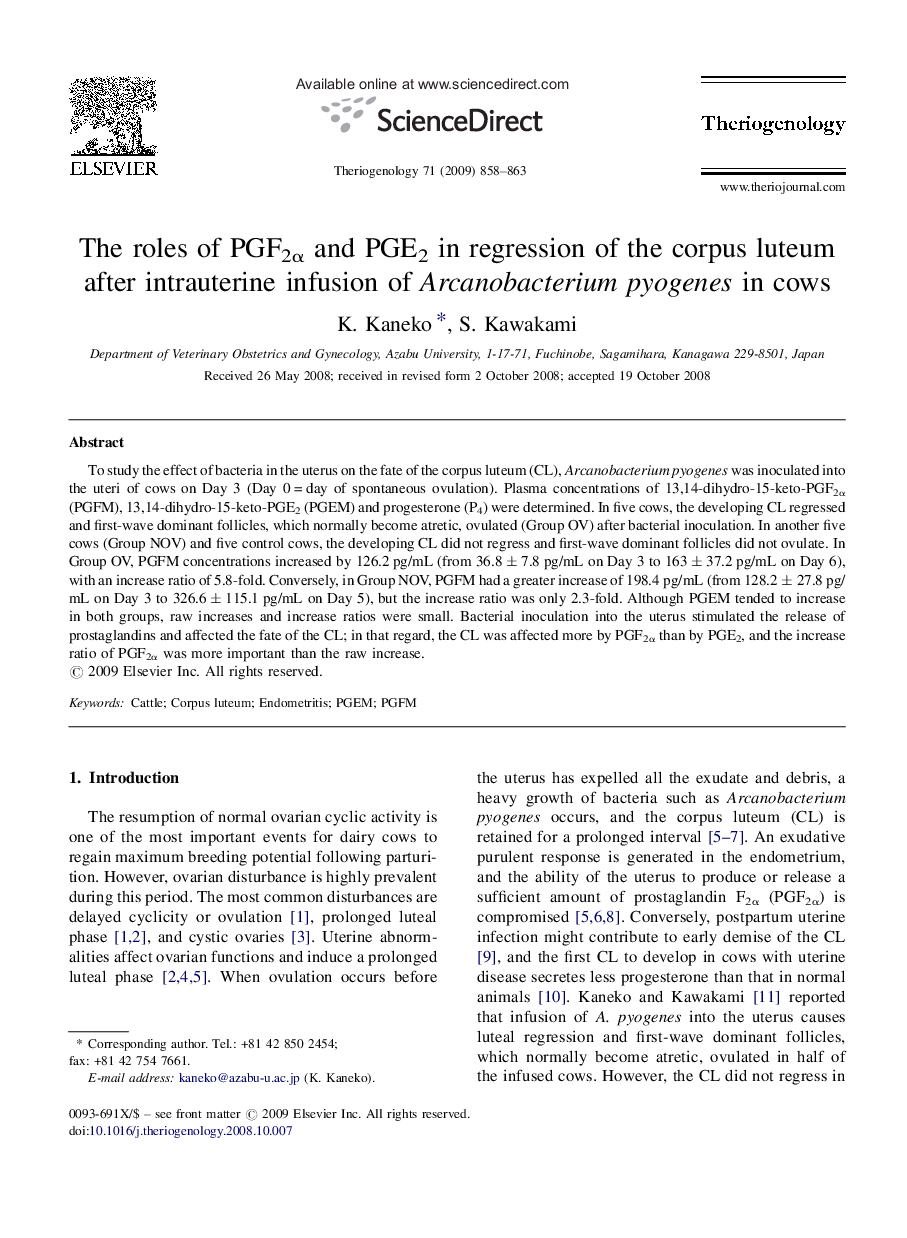| Article ID | Journal | Published Year | Pages | File Type |
|---|---|---|---|---|
| 10893095 | Theriogenology | 2009 | 6 Pages |
Abstract
To study the effect of bacteria in the uterus on the fate of the corpus luteum (CL), Arcanobacterium pyogenes was inoculated into the uteri of cows on Day 3 (Day 0 = day of spontaneous ovulation). Plasma concentrations of 13,14-dihydro-15-keto-PGF2α (PGFM), 13,14-dihydro-15-keto-PGE2 (PGEM) and progesterone (P4) were determined. In five cows, the developing CL regressed and first-wave dominant follicles, which normally become atretic, ovulated (Group OV) after bacterial inoculation. In another five cows (Group NOV) and five control cows, the developing CL did not regress and first-wave dominant follicles did not ovulate. In Group OV, PGFM concentrations increased by 126.2 pg/mL (from 36.8 ± 7.8 pg/mL on Day 3 to 163 ± 37.2 pg/mL on Day 6), with an increase ratio of 5.8-fold. Conversely, in Group NOV, PGFM had a greater increase of 198.4 pg/mL (from 128.2 ± 27.8 pg/mL on Day 3 to 326.6 ± 115.1 pg/mL on Day 5), but the increase ratio was only 2.3-fold. Although PGEM tended to increase in both groups, raw increases and increase ratios were small. Bacterial inoculation into the uterus stimulated the release of prostaglandins and affected the fate of the CL; in that regard, the CL was affected more by PGF2α than by PGE2, and the increase ratio of PGF2α was more important than the raw increase.
Related Topics
Life Sciences
Agricultural and Biological Sciences
Animal Science and Zoology
Authors
K. Kaneko, S. Kawakami,
